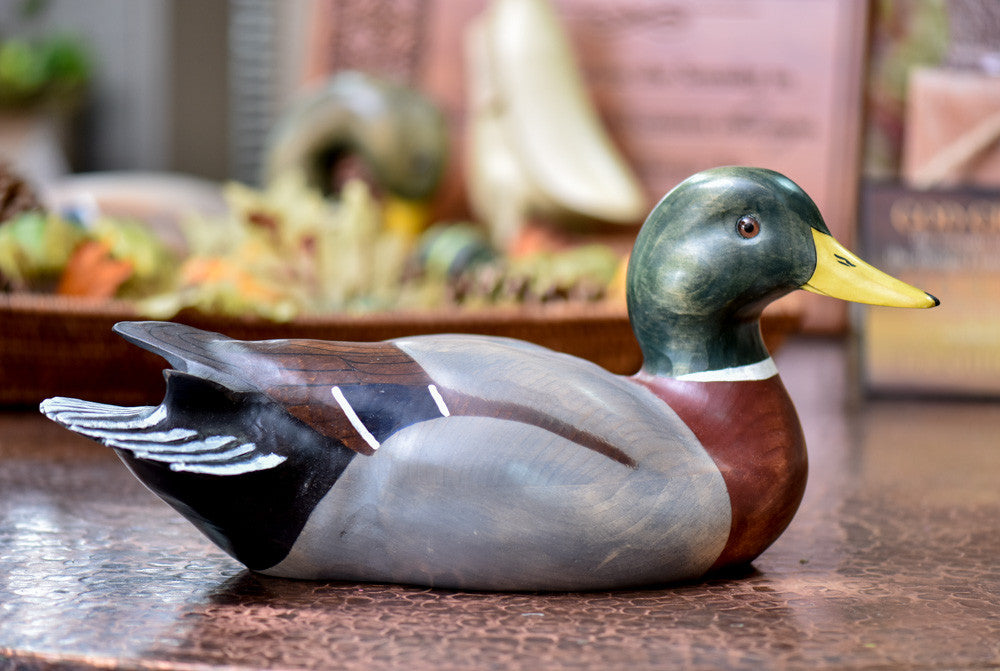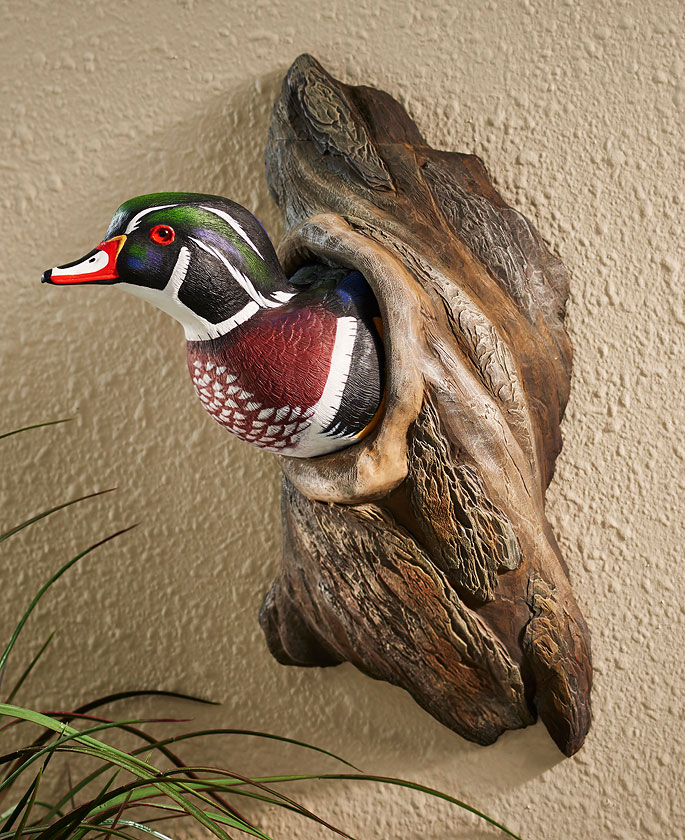If you’re looking to add a unique and charming touch to your home or outdoor space, duck decoy decor might be just what you need. These beautifully crafted pieces provide a perfect blend of aesthetics and nature while evoking a sense of nostalgia and adventure. As an avid hunter and decor enthusiast, I’ve found that incorporating duck decoys into my home decor has not only enhanced its visual appeal but also made for some fantastic conversation starters. Let’s dive deep into everything you need to know about duck decoy decor, from its history, selection tips, to styling ideas and much more!
Understanding Duck Decoy Decor
Duck decoy decor refers to the use of duck decoys—traditionally used by hunters to attract waterfowl—as decorative items in homes, offices, or outdoor spaces. These decoys can be made from various materials, including wood, plastic, and foam, and are available in various styles, colors, and designs.
The History of Duck Decoys
Duck decoys have a rich history that dates back to ancient civilizations. The Egyptians carved decoys from reeds to attract birds, while Native Americans crafted intricate wooden decoys for hunting. In the United States, decoy crafting became a popular art form in the 19th century, with skilled artisans creating iconic pieces that are now highly sought after by collectors.

The Evolution of Duck Decoy Art
Decoys have not only served a functional purpose but have also evolved into a respected art form. Today, many artists and craftsmen create stunning decoys that showcase incredible detail and craftsmanship. The transition from functional hunting tools to decorative art pieces has made duck decoys a beloved item among collectors and decorators alike.

Why Choose Duck Decoy Decor?
Incorporating duck decoys into your decor has many benefits:

- Unique Aesthetic: Duck decoys bring a rustic charm and uniqueness to your decor.
- Conversation Starters: They often spark conversations about hunting, nature, and art.
- Versatile Styling: Duck decoys can fit various decor styles, from rustic to modern.
- Connection to Nature: They remind us of the beauty of wildlife and nature.
Types of Duck Decoy Decor

When selecting duck decoy decor, you’ll encounter various types, each offering a unique flair. Here are some popular types:
1. Vintage Duck Decoys
Vintage decoys provide a nostalgic touch and often feature intricate craftsmanship. They are usually made from wood and can be quite valuable.

2. Modern Decoy Replicas
Modern replicas are designed to look like real ducks but are often made from lightweight materials like plastic or foam. They are great for outdoor decoration.
3. Hand-Painted Decoys
Some artisans specialize in hand-painted decoys, making each piece unique. These can add a personal touch to your decor.

4. Wall Art Decoys
Some artists create wall-mounted decor using decoys or decoy motifs, making for striking wall art that highlights the beauty of waterfowl.
Choosing the Right Duck Decoy Decor

When selecting duck decoy decor, you’ll want to consider several factors to ensure it fits well with your space:
Consider Your Style
Think about the overall aesthetic of your home. Are you leaning towards a rustic farmhouse style, or is your taste more modern? Choose decoys that complement your existing decor.
Material Matters
Duck decoys come in various materials. Wooden decoys offer a classic look, while plastic or foam decoys tend to be more versatile and suitable for outdoor use. Consider where you plan to place the decoys before making a decision.
Size and Placement
Decoy sizes vary significantly. Larger decoys might make a statement in a garden or entryway, while smaller ones might suit a bookshelf or mantle. Think about where you want to use them and choose sizes accordingly.
Styling Duck Decoy Decor in Your Home
Incorporating duck decoys into your decor can be fun and rewarding. Here are some creative styling tips:
1. Create a Focal Point
Use a large, vintage wooden decoy as the centerpiece on your dining table or coffee table. Surround it with complementary items like candles or seasonal flowers.
2. Use them as Bookends
Small decoys can serve as unique bookends on shelves. It’s a subtle way to integrate them into your decor without overwhelming the space.
3. Outdoor Arrangements
Use decoys in your garden or patio to highlight your love for nature. Combine them with plants, flowers, or other decor elements for an eye-catching display.
4. Wall Displays
Hang framed photographs or artwork of duck decoys alongside actual decoys for an interesting gallery wall. This approach can elevate your space and celebrate the art of decoy-making.
Comparison Table: Popular Duck Decoy Types
| Type | Material | Best For | Price Range |
|---|---|---|---|
| Vintage Duck Decoys | Wood | Indoor decoration, collectors | Varies widely ($50 – $500+) |
| Modern Decoy Replicas | Plastic/Foam | Outdoor decoration | $20 – $100 |
| Hand-Painted Decoys | Wood/Composite | Unique decor pieces | $80 – $300 |
| Wall Art Decoys | Mixed media | Indoor decoration | $30 – $200 |
Pros and Cons of Duck Decoy Decor
Pros
- Eye-catching and unique.
- Can serve multiple purposes (decorative, functional).
- Supports local artisans and craftspeople.
- Brings a touch of nature into your home.
Cons
- Can be expensive, especially for vintage pieces.
- May require regular maintenance if displayed outdoors.
- Some designs may not suit every decor style.
FAQs About Duck Decoy Decor
What materials are duck decoys made from?
Duck decoys can be made from various materials, including wood, plastic, foam, and metals. Wooden decoys are more traditional, while plastic and foam decoys are lightweight and suitable for outdoor use.
Can I use duck decoys outdoors?
Yes, many duck decoys are designed for outdoor use, especially replicas made from plastic or foam. Ensure they are weather-resistant if you plan to leave them outside.
How do I clean and maintain my duck decoy decor?
To clean duck decoys, use a soft cloth and mild soapy water. Avoid abrasive materials that might scratch the surface. For wooden decoys, consider applying wood polish for added protection.
Where can I buy duck decoy decor?
Duck decoys can be purchased from various places, including antique shops, hunting supply stores, online marketplaces (such as eBay and Etsy), and specialty decor shops.
Are duck decoys a good investment?
Some vintage duck decoys can appreciate significantly in value, making them a worthwhile investment for collectors. However, prices can vary widely, so thorough research is essential.
Conclusion
Duck decoy decor is an exceptional way to infuse your space with charm and personality, celebrating the art of wildlife and capturing the spirit of nature. Whether you’re a seasoned collector or a casual admirer, incorporating these unique pieces into your home can create a stunning visual impact. With thoughtful consideration of materials, styles, and placement, your duck decoy decor can become a cherished part of your home’s story. So, whether you’re setting up a cozy nook or revamping your outdoor space, let your creativity shine with duck decoy decor!
Happy decorating!